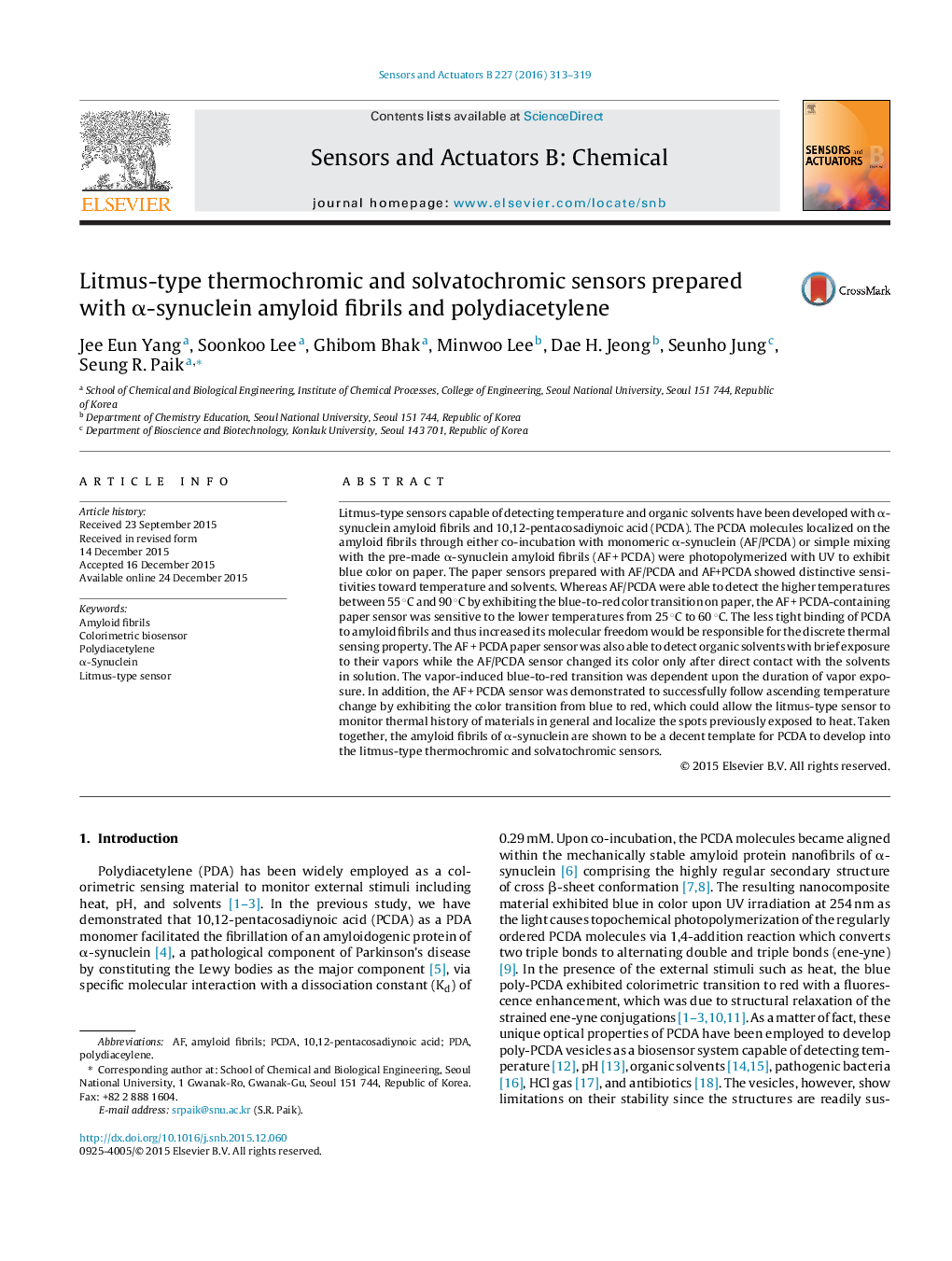| Article ID | Journal | Published Year | Pages | File Type |
|---|---|---|---|---|
| 7144598 | Sensors and Actuators B: Chemical | 2016 | 7 Pages |
Abstract
Litmus-type sensors capable of detecting temperature and organic solvents have been developed with α-synuclein amyloid fibrils and 10,12-pentacosadiynoic acid (PCDA). The PCDA molecules localized on the amyloid fibrils through either co-incubation with monomeric α-synuclein (AF/PCDA) or simple mixing with the pre-made α-synuclein amyloid fibrils (AF + PCDA) were photopolymerized with UV to exhibit blue color on paper. The paper sensors prepared with AF/PCDA and AF+PCDA showed distinctive sensitivities toward temperature and solvents. Whereas AF/PCDA were able to detect the higher temperatures between 55 °C and 90 °C by exhibiting the blue-to-red color transition on paper, the AF + PCDA-containing paper sensor was sensitive to the lower temperatures from 25 °C to 60 °C. The less tight binding of PCDA to amyloid fibrils and thus increased its molecular freedom would be responsible for the discrete thermal sensing property. The AF + PCDA paper sensor was also able to detect organic solvents with brief exposure to their vapors while the AF/PCDA sensor changed its color only after direct contact with the solvents in solution. The vapor-induced blue-to-red transition was dependent upon the duration of vapor exposure. In addition, the AF + PCDA sensor was demonstrated to successfully follow ascending temperature change by exhibiting the color transition from blue to red, which could allow the litmus-type sensor to monitor thermal history of materials in general and localize the spots previously exposed to heat. Taken together, the amyloid fibrils of α-synuclein are shown to be a decent template for PCDA to develop into the litmus-type thermochromic and solvatochromic sensors.
Keywords
Related Topics
Physical Sciences and Engineering
Chemistry
Analytical Chemistry
Authors
Jee Eun Yang, Soonkoo Lee, Ghibom Bhak, Minwoo Lee, Dae H. Jeong, Seunho Jung, Seung R. Paik,
